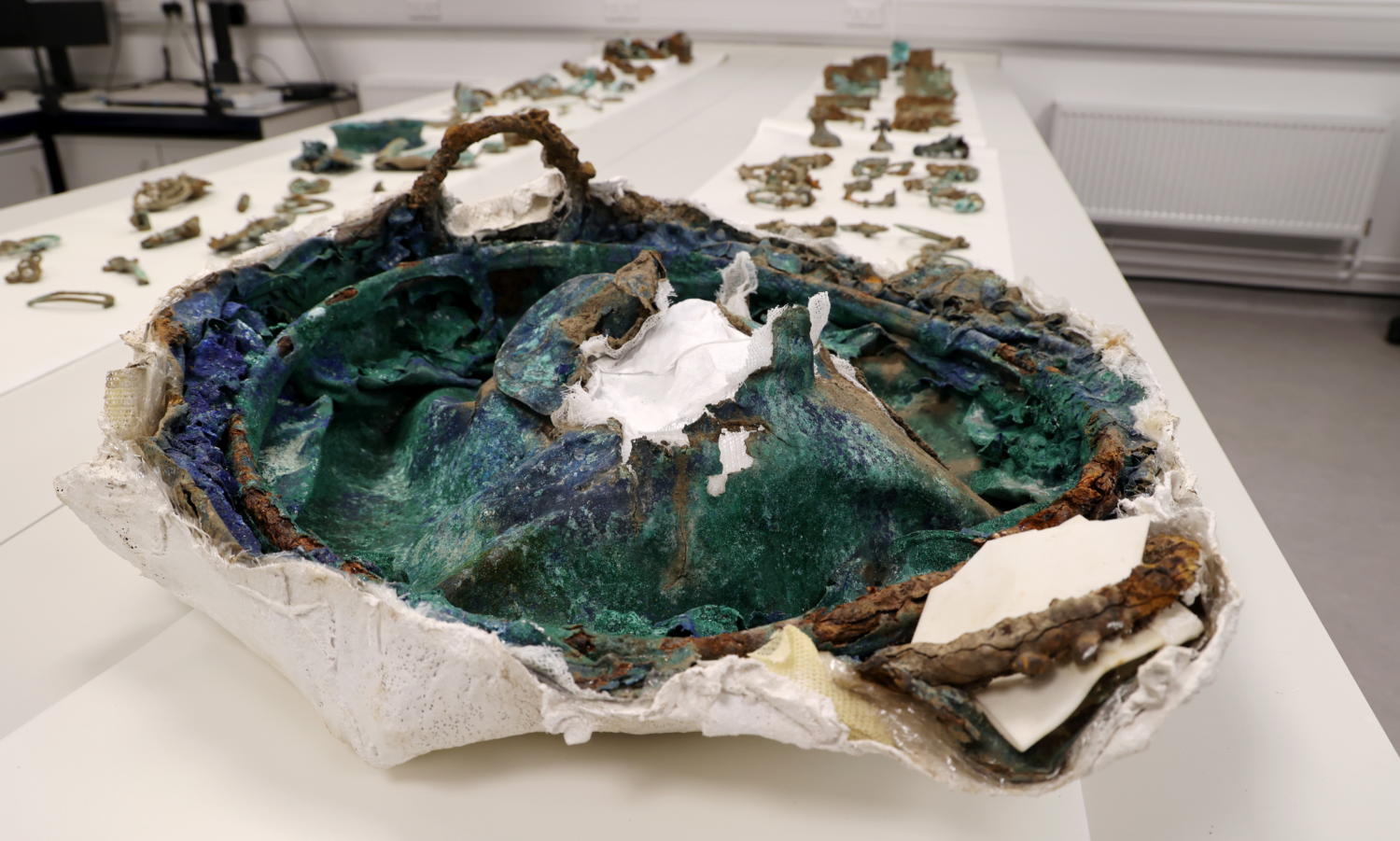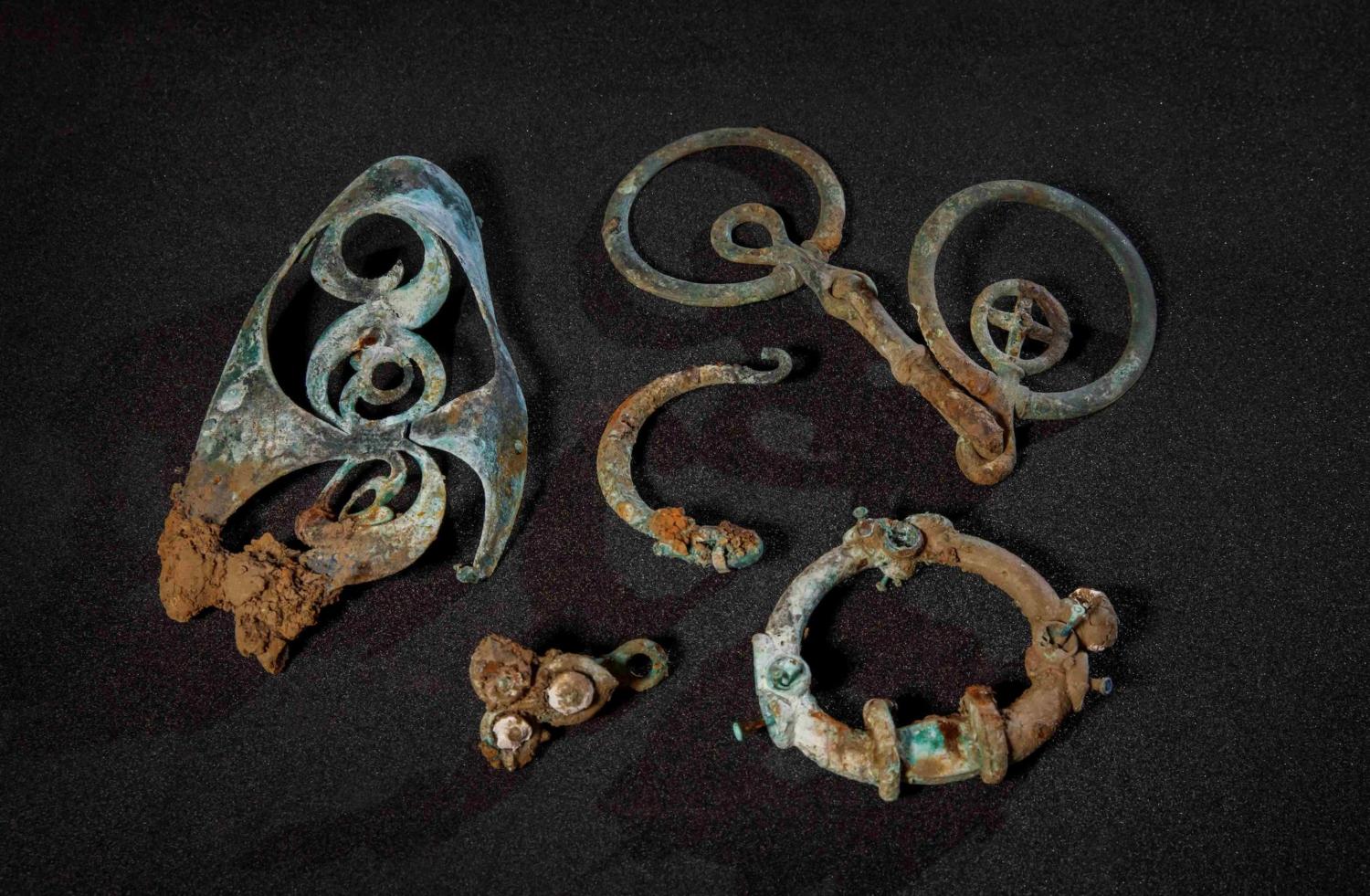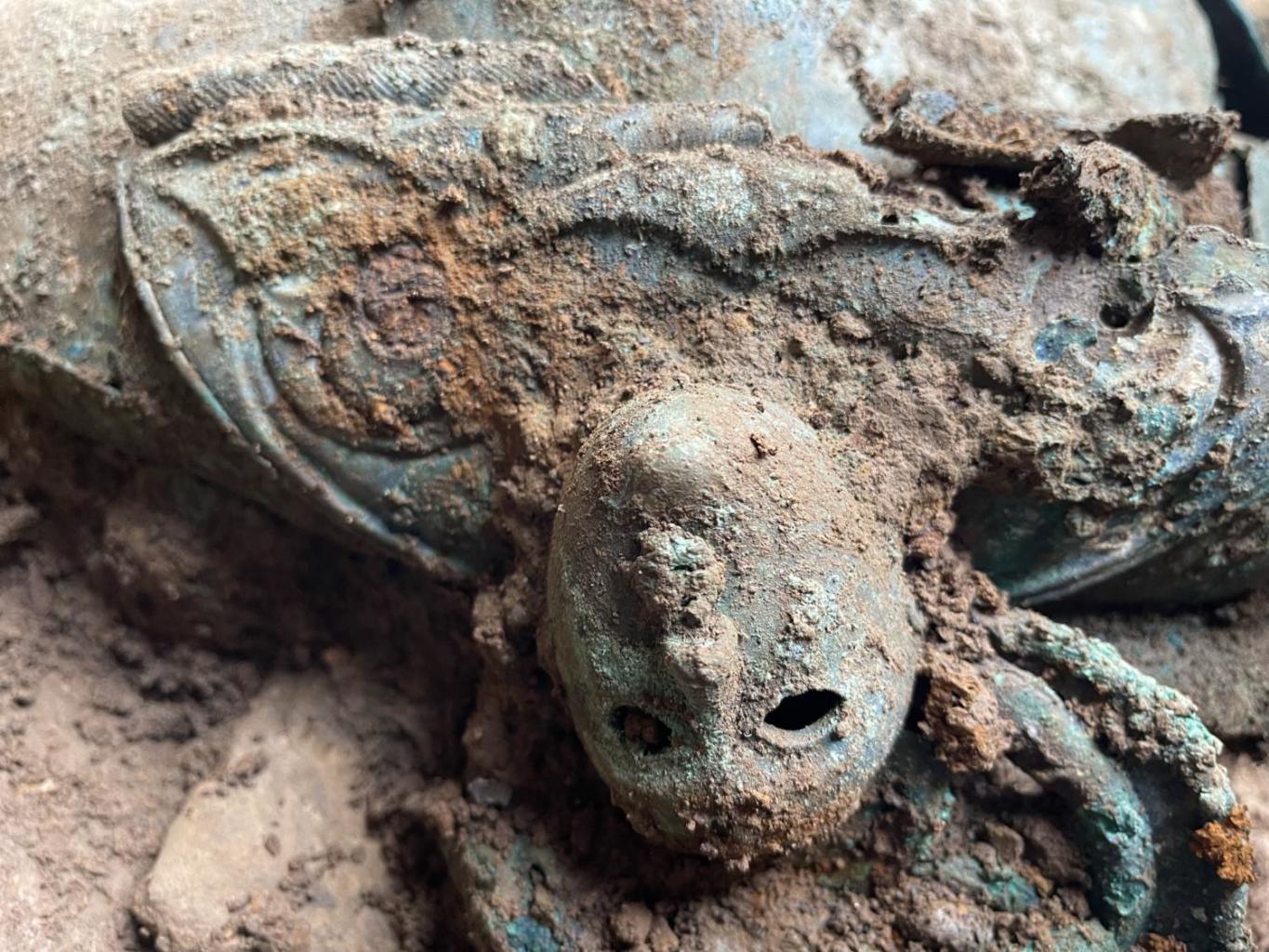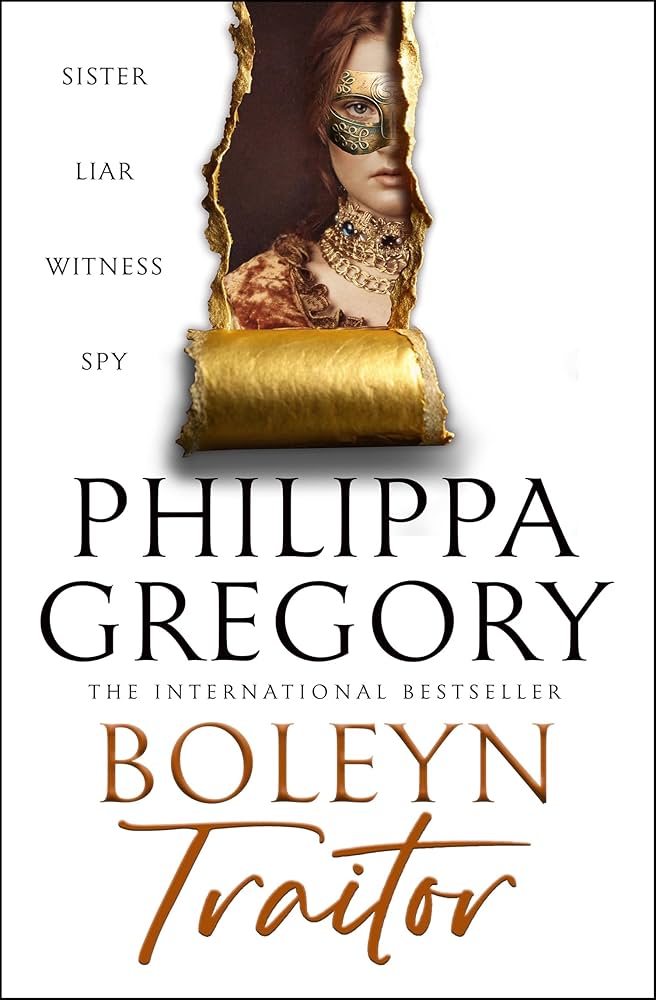(Close up of one of the two mask-like human faces decorating the shoulder of the lidded vessel or cauldron from the Melsonby hoard shown upside down as found during excavation. Credit: Department of Archaeology, Durham University)
On 25 March 2025 Historic England, Durham University and the British Museum announced the discovery of the Melsonby Hoard: one of the largest and most important Iron Age finds in the UK.
Unearthed in North Yorkshire near the village of Melsonby, the once-in-a-generation discovery includes over 800 Iron Age objects dating back 2,000 years. No human remains were found.
The collection includes vehicle components from wagons and chariots, elaborate horse-harnesses, iron tyres, ceremonial spears and ornate cauldrons. Some harness pieces are adorned with red, Mediterranean coral and coloured glass, and are larger than is typical for the period. Some objects have links with continental Europe. Initial assessment suggests the objects were buried in the first century AD, around the time of the Roman conquest of southern Britain.

The Cauldron – found buried upside down with a large stone crushing the centre inwards. Credit of Durham University
The hoard was first reported in December 2021 by metal detectorist Peter Heads. Under the Treasure Act of 1996, finders have a legal obligation to report all finds of potential treasure to the coroner in the district in which the find was made. The find was excavated in 2022 by a team of archaeologists from Durham University, accompanied by support from the British Museum and over £120,000 grant funding from Historic England.
A selection of objects from the hoard will be part of a temporary display in the foyer of the Yorkshire Museum from 25 March 2025.
Duncan Wilson, Chief Executive of Historic England commented: “Quite simply, this is one of the most important and exciting Iron Age period discoveries made in the UK. It sheds new light on Iron Age life in the north and Britain, but it also demonstrates connections with Europe.” “Any member of the public viewing these new discoveries will feel a real sense of excitement and wonder.”
Dr Andrew Woods, Senior Curator at the Yorkshire Museum said: “This Iron Age hoard is an unprecedented find in the north which will help us to understand more about this remarkable period in our history. We have the exciting opportunity to save the hoard for the nation and the people of Yorkshire. By acquiring the hoard we will be able to make it accessible to everyone and, working in partnership with others, we can learn more about this fascinating period, why the hoard was buried, how the objects may have been used and to cast light on to whom it may have belonged.”
The excavation of the site was funded by Historic England and led by archaeologists at Durham University, with specialist support from the British Museum.

Dr Andrew Woods, Senior Curator at the Yorkshire Museum said: “This Iron Age hoard is an unprecedented find in the north which will help us to understand more about this remarkable period in our history. We have the exciting opportunity to save the hoard for the nation and the people of Yorkshire. By acquiring the hoard we will be able to make it accessible to everyone and, working in partnership with others, we can learn more about this fascinating period, why the hoard was buried, how the objects may have been used and to cast light on to whom it may have belonged.”
Professor Tom Moore, Head of the Department of Archaeology, Durham University commented: “The Melsonby Hoard is of a scale and size that is exceptional for Britain and probably even Europe.” “This discovery demonstrates how responsible metal-detectorists like Peter Heads, by alerting the authorities, have ensured this material could be safeguarded for the future.”
Research on the find is in its early stages and is expected to help archaeologists learn about how Iron Age people expressed wealth and status, as well as how and where they travelled and traded. More research is required to identify parallels in Britain and across Europe. The hoard has the potential to offer insight into how these items were made and the origins of the material they include, such as the coral. Durham University and The Yorkshire Museum will work with specialists from across Europe to explore these questions.
The Yorkshire Museum is launching a fundraising campaign to secure the hoard for the nation. If the campaign is successful, the hoard will become a permanent part of the Museum and be available for research and public benefit in the future.
The museum is urging the public to help raise money to save the hoard for future generations from private sale or from being dispersed beyond the UK. The value of the collection has been estimated at £254,000, which would keep it in a public museum, available for research and public display. An estimated £250,000 is necessary for the conservation of the hoard to prevent deterioration of the fragile metalwork, enamel and coral, so the overall goal is £500,000.
Donate here to help keep the hoard in Yorkshire: www.crowdfunder.co.uk/p/save-the-melsonby-hoard
Naomi Marques Wiggin is an English Literature student at the University of York, news editor and journalism enthusiast! Naomi is from the Midlands, but loves all things York. When she isn’t writing or reading, you can find her sailing or hiking!












Add a comment